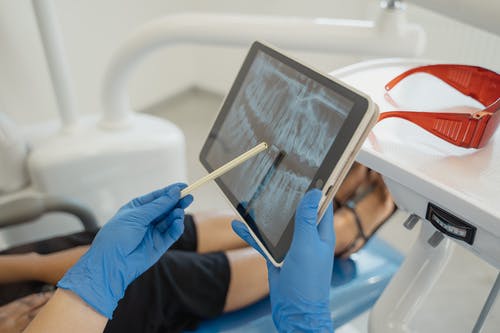People increasingly find laser dentistry less unpleasant or more effective than conventional techniques. With lasers, dentists may now perform numerous treatments with greater accuracy. A dental laser operates by supplying light energy when utilized for both routine dental operations and dental surgical procedures.
Understanding laser dentistry can make it easier to comprehend why dentists use it to treat their patients. The complex and soft tissues of the mouth are removed from or modified with a dental laser, which emits focused effective light beams.
Since high-energy light technology replaces any drills or other cutting instruments frequently used in dental operations, laser dentistry is becoming increasingly popular among dental patients. Due to the potential for complete or limited painless laser dentistry, this less invasive method also implies that dental patients frequently require less anesthetic or none.
Laser Dentistry Procedures
These procedures are often less intrusive than those that use a blade, making the patient more at ease. Compared to other treatments, some people recover more quickly. Your dentist might not need an anesthetic because these treatments involve minimal discomfort.
Cavity Detection
Cavity detection is a technique that you have the option of having done. With a dental laser, you may identify early indications of tooth decay and begin taking preventative actions to save the tooth.
One method for complex tissue laser dentistry is to use a laser to find cavities or tooth decay. In addition to being used often to detect tooth decay, laser dentistry may also be utilized to prepare for the dental filling required to stop the decay.
Filling a Cavity
By eliminating the microorganisms present in the cavity, a dental laser can be utilized to cure cavities. A dentist can remove the decaying portions using a laser rather than a drill. This is a minimally invasive filling method. Look up “Dentist in Owings Mills” for the best results.
Crown Lengthening
By reshaping the gum tissue of a dental patient, dental lasers can promote healthier bone and tooth structure. By rearranging the gum tissue, they can also enhance the appearance of a smile by enabling a patient to have the ideal amount of gum tissue around their teeth.
Sensitivity Treatments
Treating sensitivity is a common problem that laser dentistry may assist with. Dental lasers can communicate with the nerve and close tubules on the roots of teeth.
This process can help lessen sensitivity to hot or cold objects by suppressing these signals. Laser dentistry methods are frequently advised for those with severe tooth sensitivity because they may be utilized to seal the region surrounding a tooth’s root that is generating the extreme sensitivity. Visit a dental website like https://www.crossroadsdentalarts.com/dental-services/emergency-care/ for additional details.
Gum Reshaping
Some people have gums that are not in good shape due to poor hygiene or heredity. This could trigger sensitivity or be an aesthetic problem. When altering gums, dentists employ laser dentistry.
Using conventional techniques may cause these tissues to become sensitive and prone to bleeding. Laser dentistry results in less bleeding and reduced swelling of the gums after treatment. Consult a dentist like Crossroads Dental Arts esthetic dentistry service for more information.
Teeth Whitening
Since it can reduce the amount of time someone must spend going through the bleaching process necessary for correctly whitened teeth, dental lasers are frequently employed in teeth whitening operations. To lessen tooth staining, using bleaching gel and lasers is recommended. Your teeth may appear whiter and brighter as a result.
Laser tooth bleaching is more effective than at-home procedures like whitening strips. It costs extra, though, and dental insurance doesn’t cover it.

